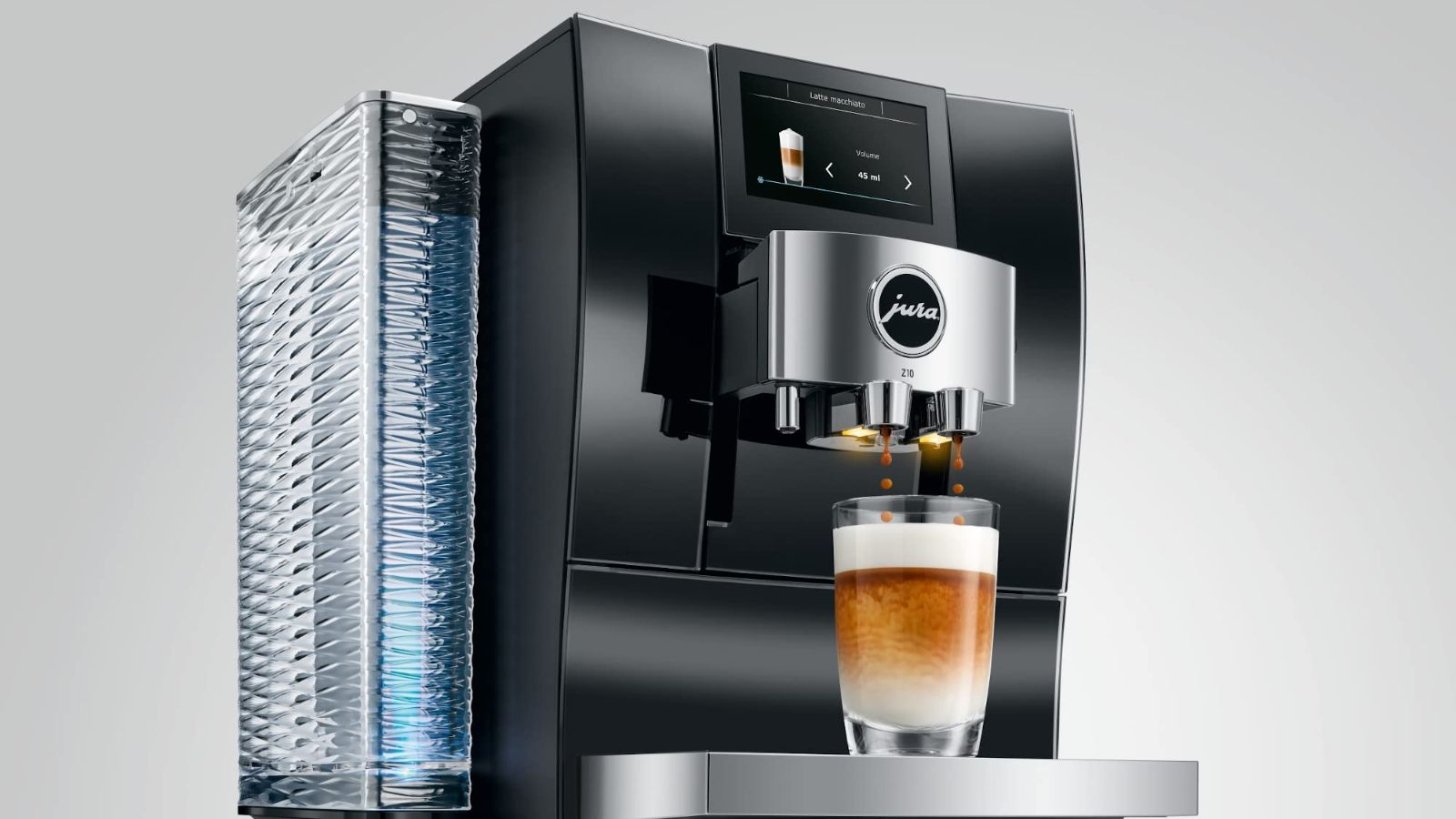
I consider bean-to-cup coffee makers to be luxuries in and of themselves. Jura's Z10 takes luxury to a new level with its low lighting, premium finishes, and custom settings. The Swiss brand has outdone itself, again.
I've tested over sixty of the best coffee makers on the market over the last nine months. Some have made more of an impression than others. Jura's falls directly into the memorable category, not just because of its aesthetics, but because it can brew incredible coffee too.
I put the Z10 through our standard series of tests, making espresso, Americano, and cappuccino. I also tested some of the other specialty settings and was impressed across the board. Was I impressed enough to drop nearly $4,000 though?
Specifications
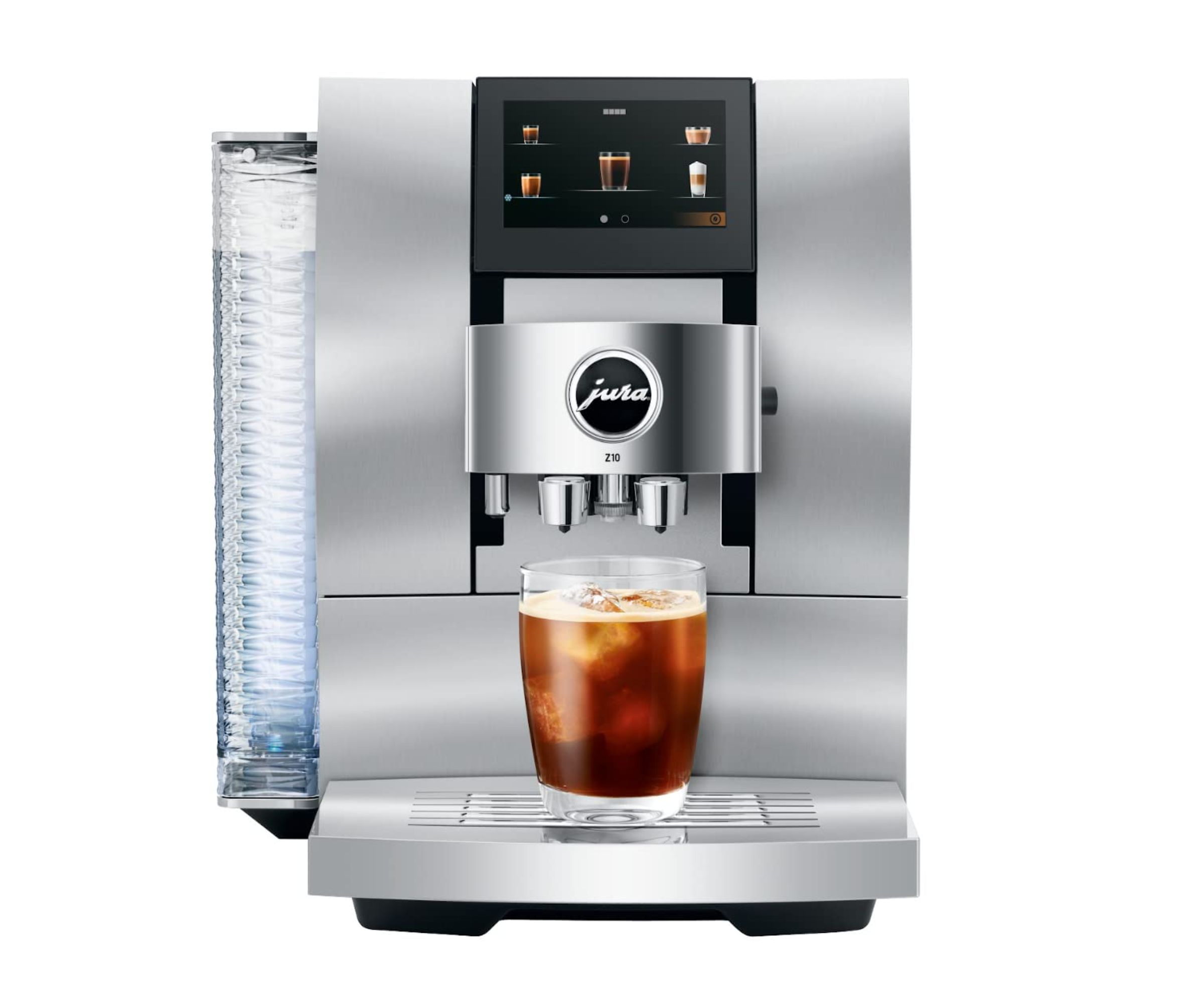
Unboxing
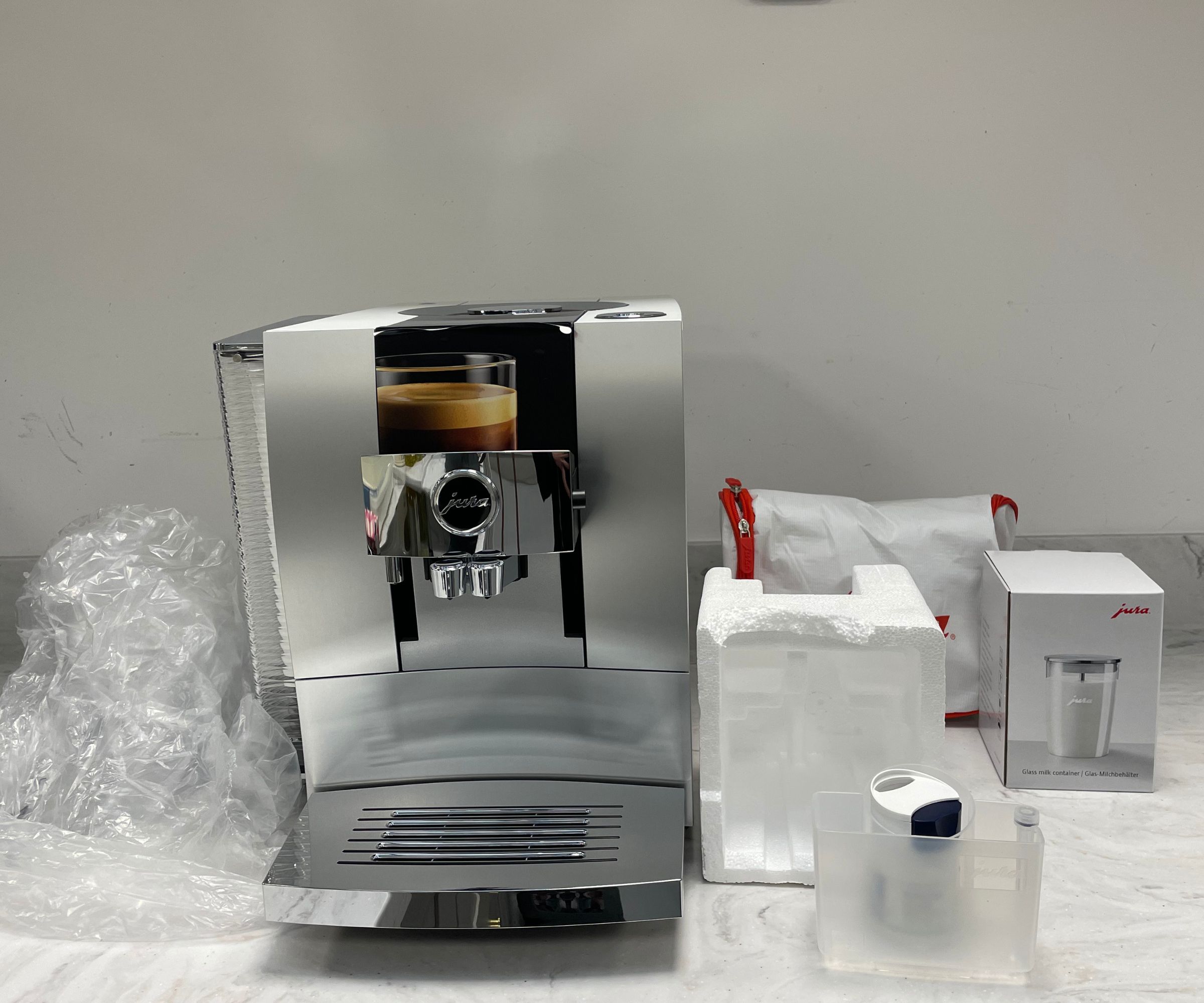
I'll have to let you in on some behind-the-scenes a little bit here, because I didn't get the traditional unboxing experience. Jura sent me their 'press' model which gets tested by other reviewers too. This meant that my machine came wrapped in some soft plastics and non-recyclables. I think some of these were standard, so expect soft plastics. However, you'll hopefully get some recyclable cardboard too.
The touchscreen takes you through the entire process of setting up the Jura. You'll set the language, water hardness, fill the bean hopper and water reservoir, and connect your milk frother (which costs extra). You'll do all of this under careful instruction from your machine. This is a great chance to personalize and set your coffee preferences so that the Jura can be tailoring your coffee towards your needs from the get-go.
Who would it suit?
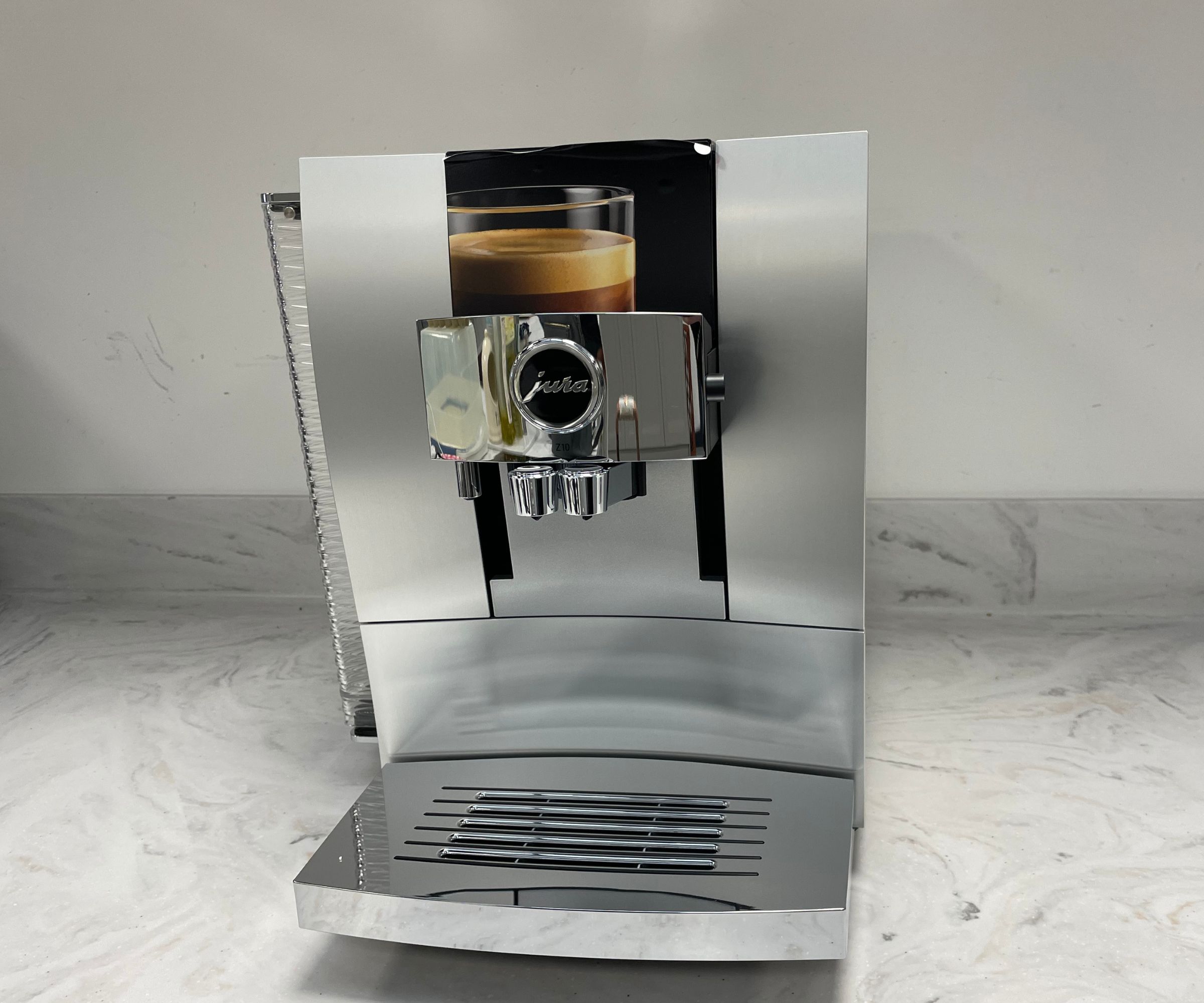
The Jura Z10 is built to cover the needs of a range of coffee drinkers. The price will sift out a lot of shoppers, because it retails around $3,800. This is the price you pay for luxury (and then a little bit more).
The Jura Z10 is perfect if you want a hands-off coffee experience. You won't need barista qualifications to be able to brew a delicious cup of coffee first thing. The menu covers ten different options (which becomes 32 with the different adjustments), so whether you want a black coffee, shot of coffee, milky coffee, iced coffee, or something in-between, the Jura has you covered.
If you're shopping on a budget or looking for an involved brewing experience, there are machines that will better suit your needs. I'll recommend some alternative options further down, but for now, let me tell you all about the Z10.
What is it like to use?
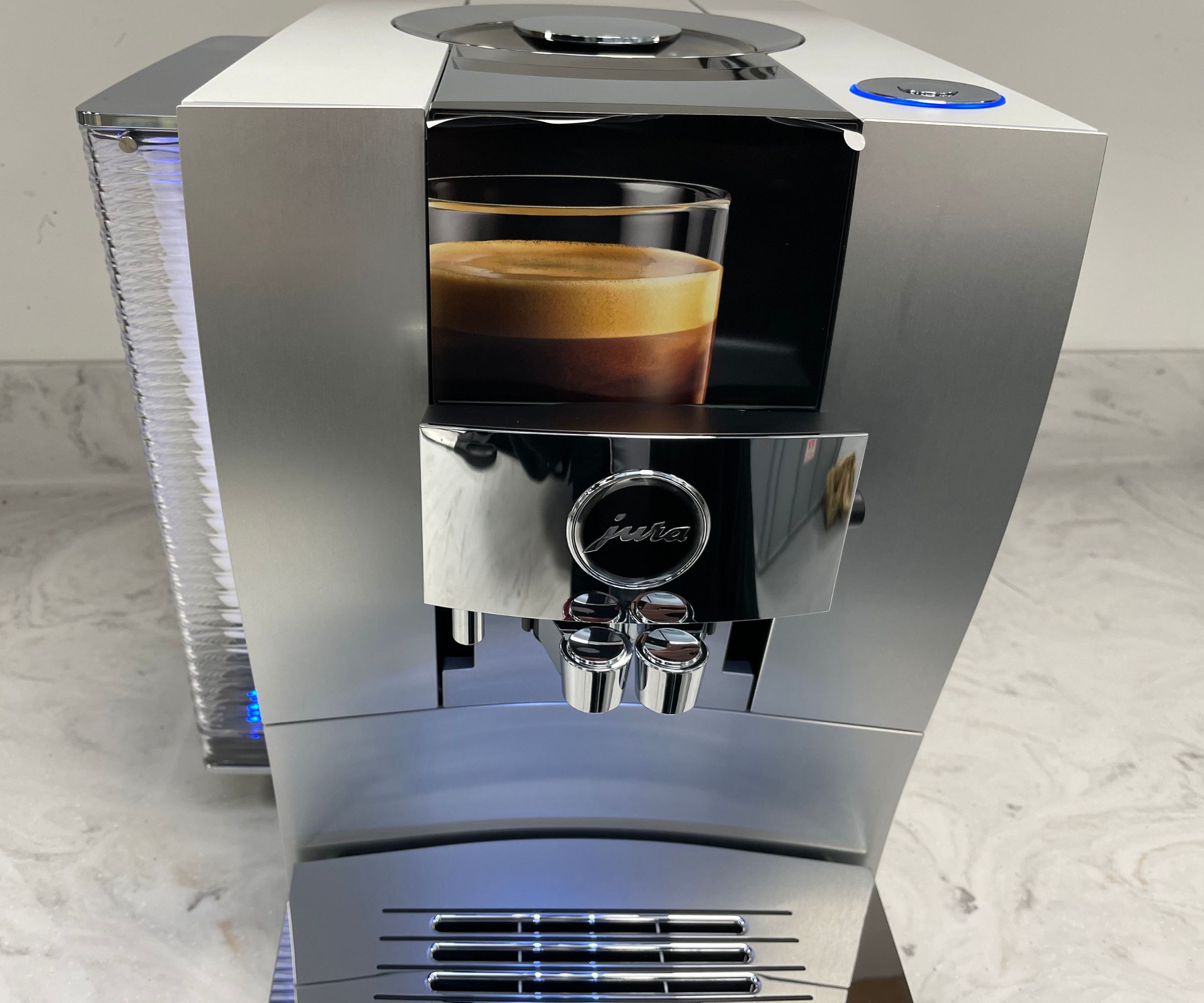
The Jura was easy to start using. As I said, the menu takes you through all the processes of setting up your machine. There's no confusing instruction manuals that you'll rifle through (and feel like ripping apart). It was stress-free and speedy.
Test 1: espresso
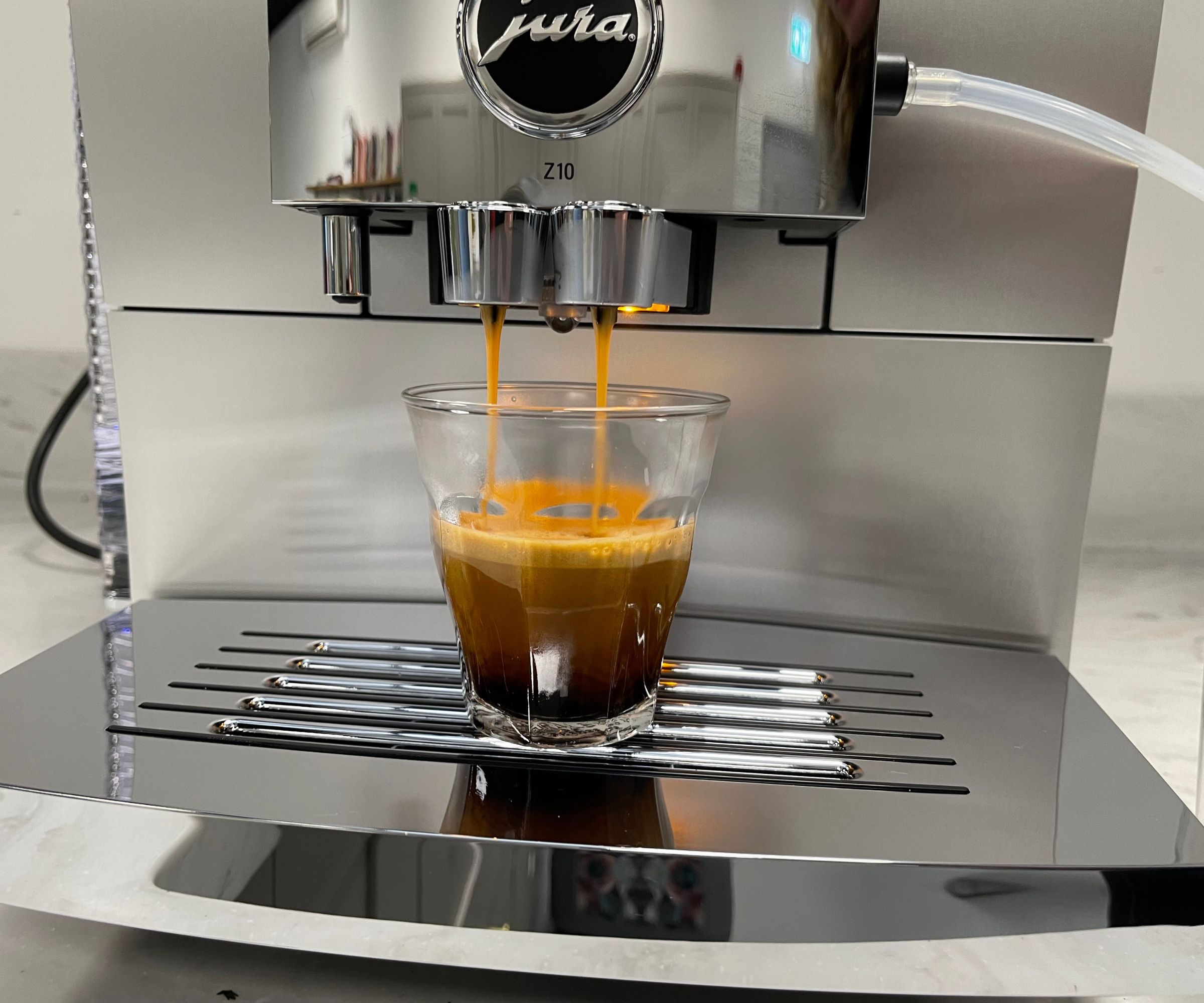
This is the first task that we give any coffee maker. It tests the basic flavor extraction and mechanisms of the machine. On the Jura, it's as simple as selecting the espresso setting (you can adjust the size of it in 5ml increments, as well as the strength) and the machine will begin brewing.
It's really quiet, even grinding didn't take my dB monitor above 70. On the first espresso, the machine took a minute and a half to get the system warmed up and grinding. I would say that this is slow, but as I continued making espressos, the time got shorter and shorter until it took just 25 seconds from touching the button to brewing an espresso.
You can see in the image, that the espresso was a rich, creamy color. There was a thick crema on top, indicating that my coffee oils had been well-extracted. It was 190 degrees and 1.5 oz, making it the perfect temperature size for shotting like the Italians would. I was pleased with the intense, rich, and balanced flavors when I gave it a taste test, so overall, the espresso test was a success.
Test 2: Americano
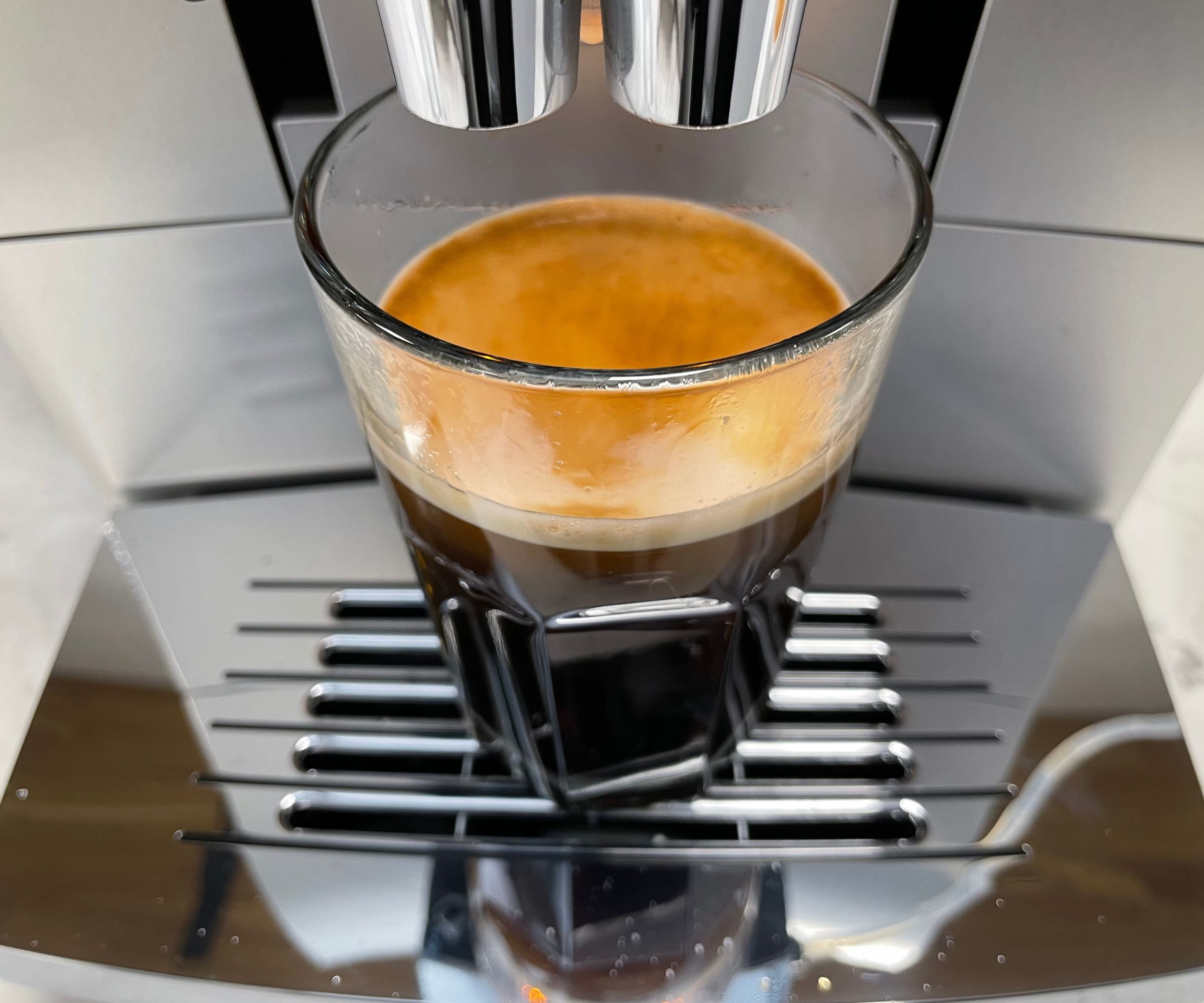
I think the picture of this Americano speaks for itself. Have you ever seen a crema that thick on a drink that big? It was like one giant espresso.
These coffees shouldn't be too tricky to make. A traditional Americano is an espresso with hot water brewed on top (a long black is hot water with espresso brewed on top). The only place to fall down is water temperature, because if it's too hot your coffee will scald and if it's too cold, the coffee will sour.
The Jura brewed my espresso and water at the same time, which isn't a process that I've ever seen before. However, the results of the coffee were more than worth it. The coffee was 190 degrees, flavorful, well-balanced, and delicate with deep, earthy tones. It took 47 seconds to make a 6 oz cup of coffee, which is on the slow side, but not by much.
The size and strength isn't particularly relevant since you can adjust this in tsp increments. You could have a large strong cup of coffee or a small weak one, either would brew as perfectly as this. Trust me, I tried them.
Test 3: cappuccino
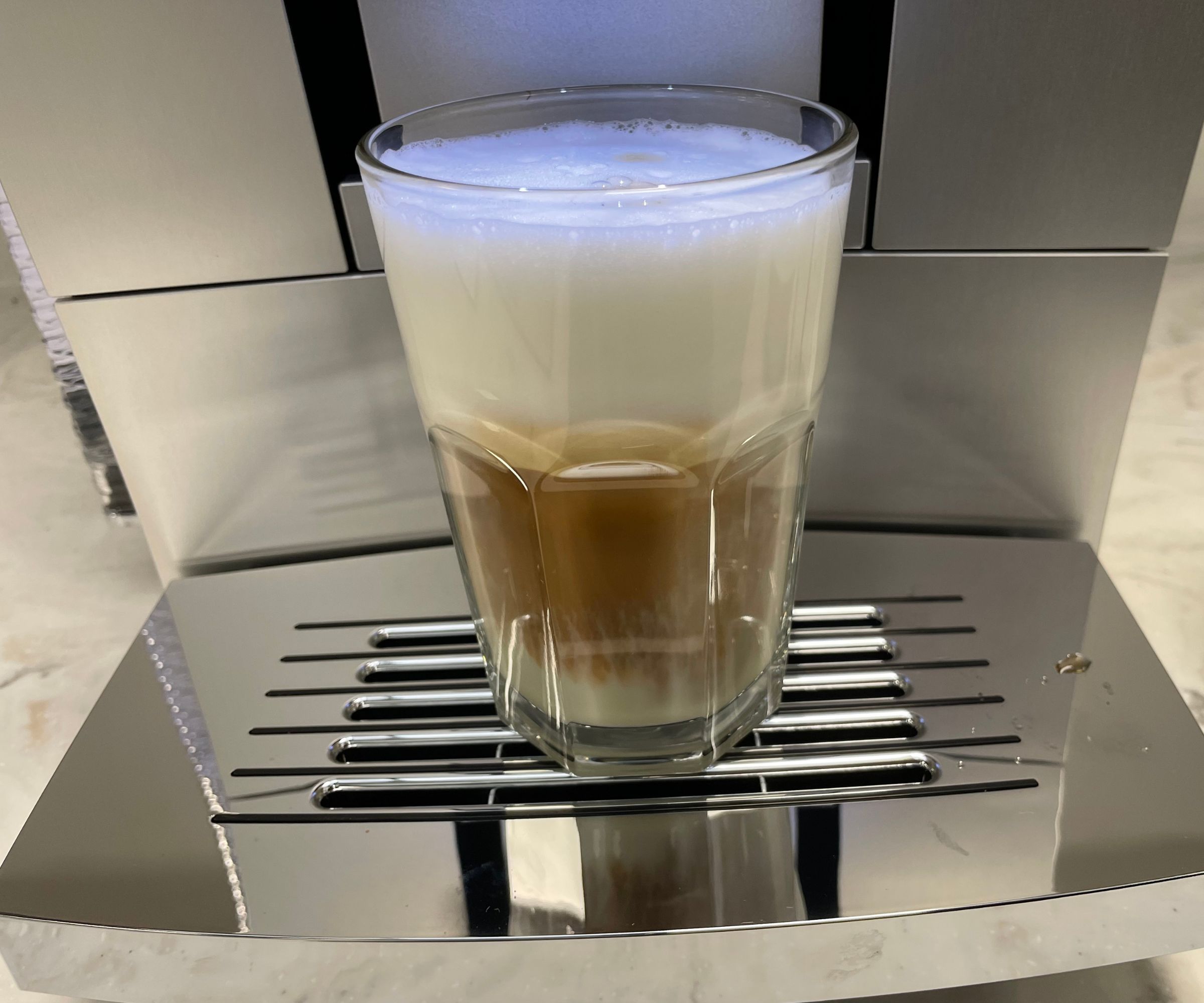
The danger of bean-to-cup machines is that they automatically texture milk. It's also one of the most beautiful parts of them, but it means that they can often overshoot the temperature of plant-based milks and accidentally burn dairy milk.
The Jura's glass carafe is like lots of others. You have to insert a tube into the side of your coffee maker from the carafe. This isn't fiddly, but it takes more effort than other simple, click-in carafes. The reason it's worth it is because the carafe is easier to store and clean. The tube also self-cleans, so it's a smooth system.
I used the Jura to make macchiatos, lattes, cappuccinos and more. All of these were made with dairy and oat milk and I couldn't fault a single one. The Jura steams the milk before adding coffee, so it's hard to check the strength of your drink. You also don't get the same integration that you would on an espresso machine. The milk sits on top of your coffee, which will need a stir to start off anyway.
Mine was 180 degrees, silky, sweet, and smooth to drink. I really enjoyed it. Some people might not like the idea of having to start with a stir, but I didn't mind it at all.
Test 4: extra functions
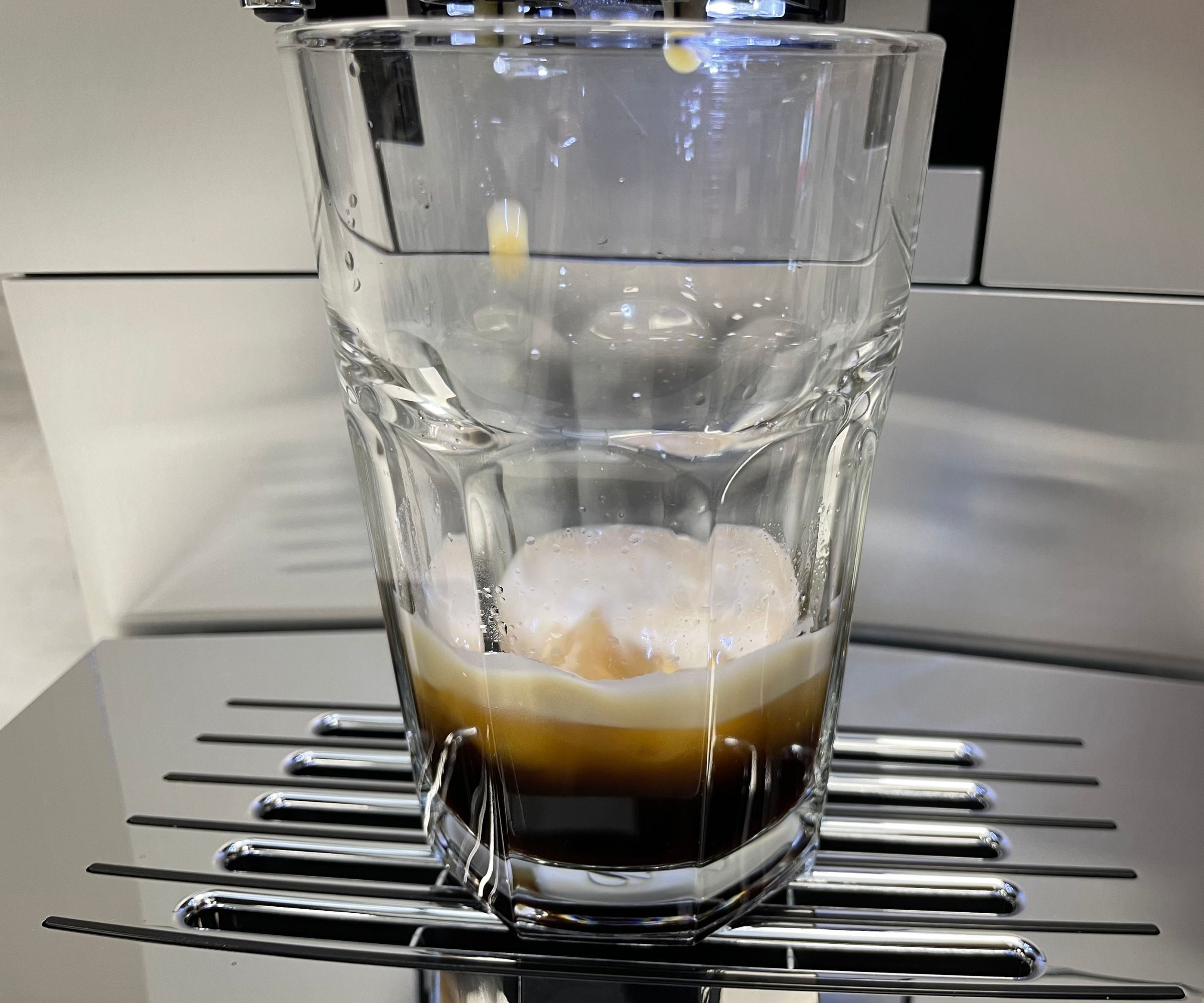
The Jura has a range of settings: espresso, Americano, cold brew, latte macchiato, cappuccino, espresso doppio, jug of coffee, ground coffee, and hot water. You can make other specialty coffees with milk too. In short, you'll never get bored of your coffee settings.
I was intrigued to try their iced, cooler coffee drinks, to see whether the machine was any good and extracting coffee at cooler temperatures. You won't be surprised to know that it did an excellent job. A 24-hour cold brew would be smoother and sweeter than ones that the Jura can make in a matter of minutes, but if you're not willing to put the time into a long coffee-making session, don't worry.
Cleaning, storage, and maintenance
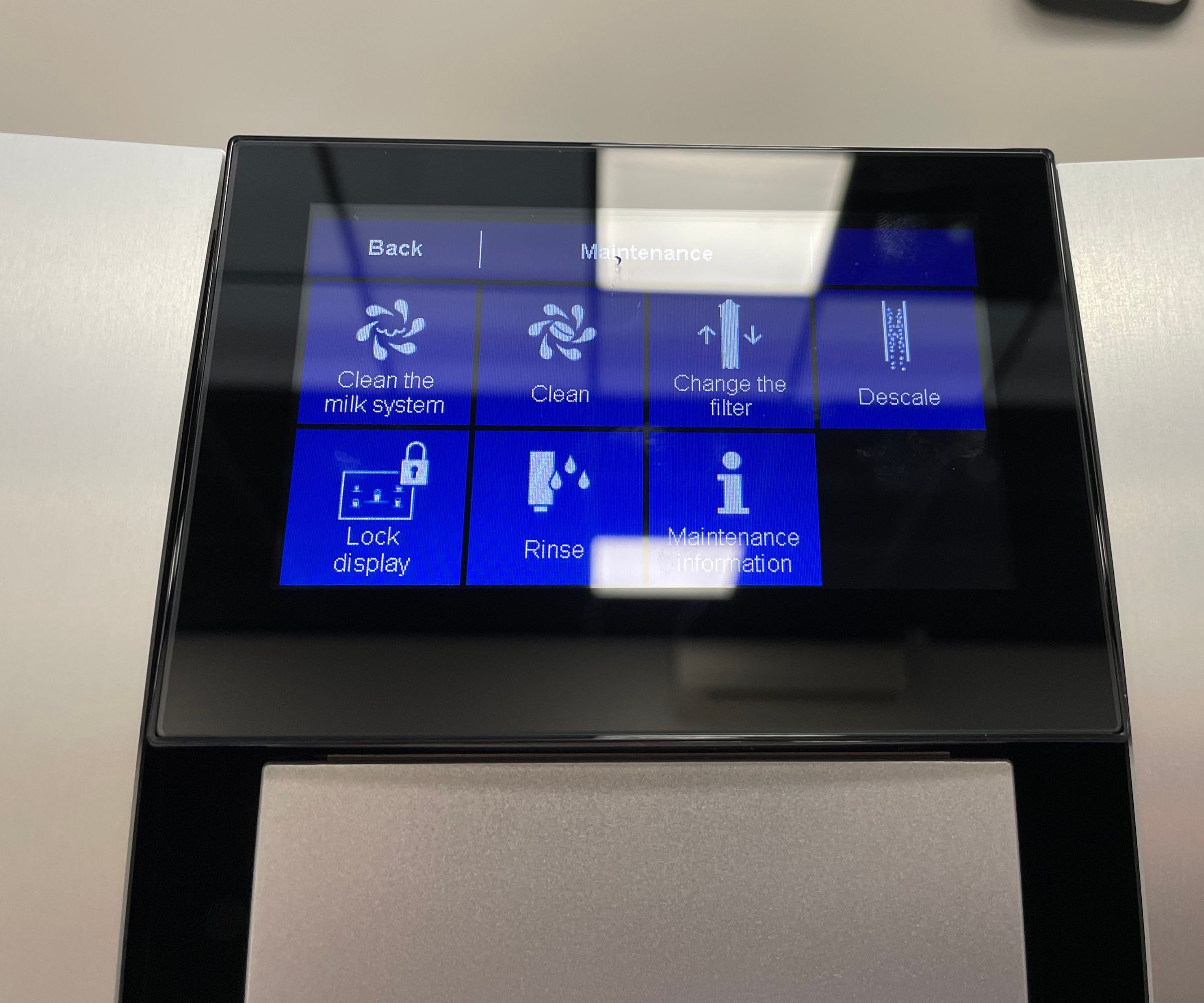
There's a whole page for your cleaning options. The official deep clean takes 20 minutes and you'll hardly need to lift a finger. There's one break when you'll need to add a cleaning tablet, but the machine will stop and tell you when this is.
In your day-to-day usage, the machine is low-maintenance. The brew head is adjustable, so you can move it close to your cup of coffee, minimizing splashes on the metal surfaces. The screen will tell you when the grounds container and drip trays need emptying, which isn't often (probably every eight coffees). The drip tray is neat, because Jura has built a pouring spout at the back, so you can tip it over your sink to empty it. The process couldn't be more simple.
How does it rate online?
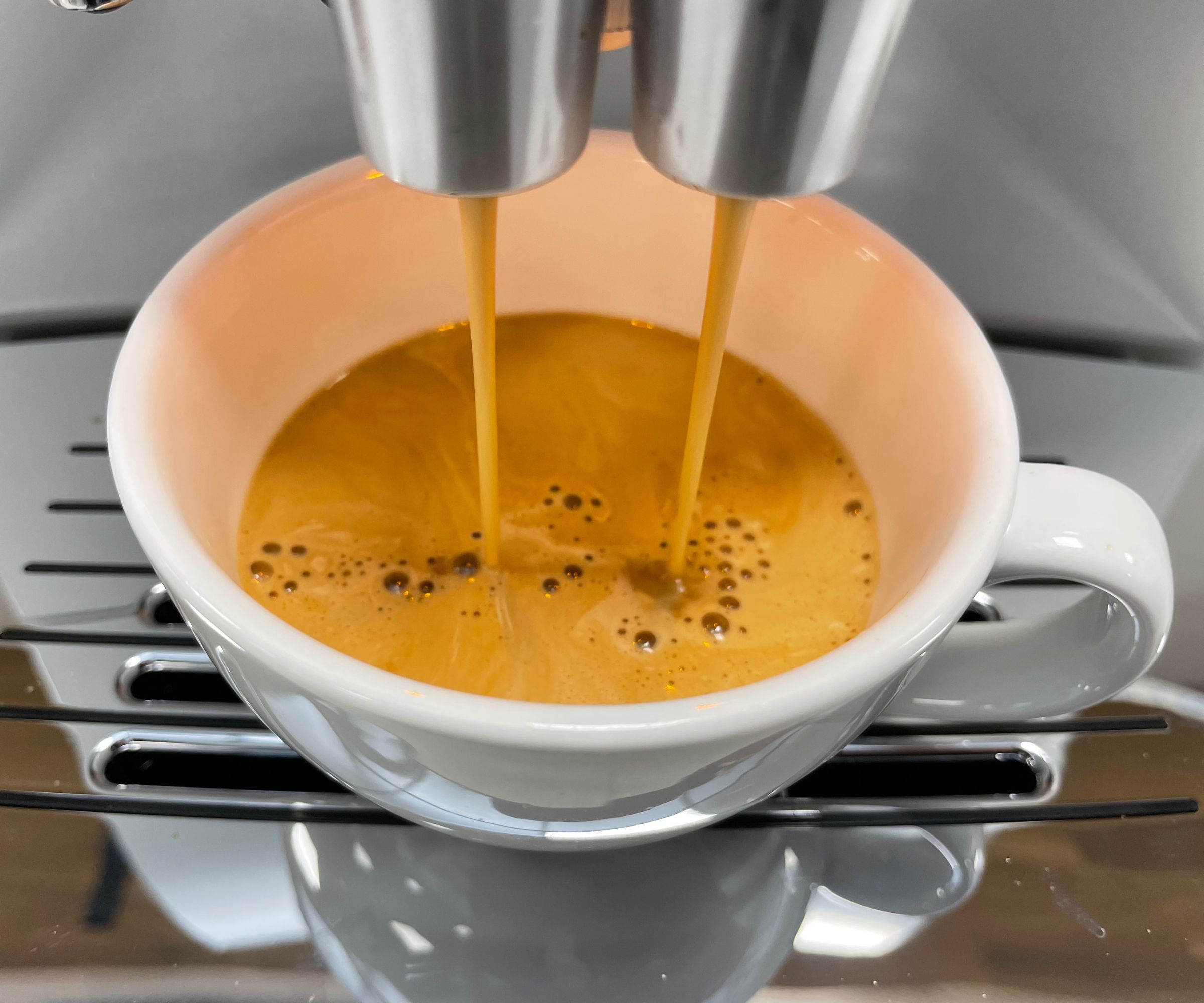
In spite of the hefty price tag, the Jura Z10 has some impressive reviews online. I saw experts give it 5/5 and 100% with their only fault being the price.
People love the premium design and power behind this smart coffee maker. They say that the fully automatic settings make it a dream to use, as well as giving the electronic grinder well-deserved praise for how quiet it is. Plenty of people made good use out of the hot and cold coffee settings too.
Obviously, price is a barrier, but people also had some common grievances with the Jura. They felt that the 'cold brew' setting was misleading. People say that it's delicious and creamy, but that the coffee isn't suspended in cold water, so it should be called an iced coffee instead.
Some people also found the need to buy the milk frother separately a bit mean. This is an expensive machine, so it should come in the price, Having to account for auxiliary costs when the machine costs nearly $4,000 already feels excessive.
How does it compare?
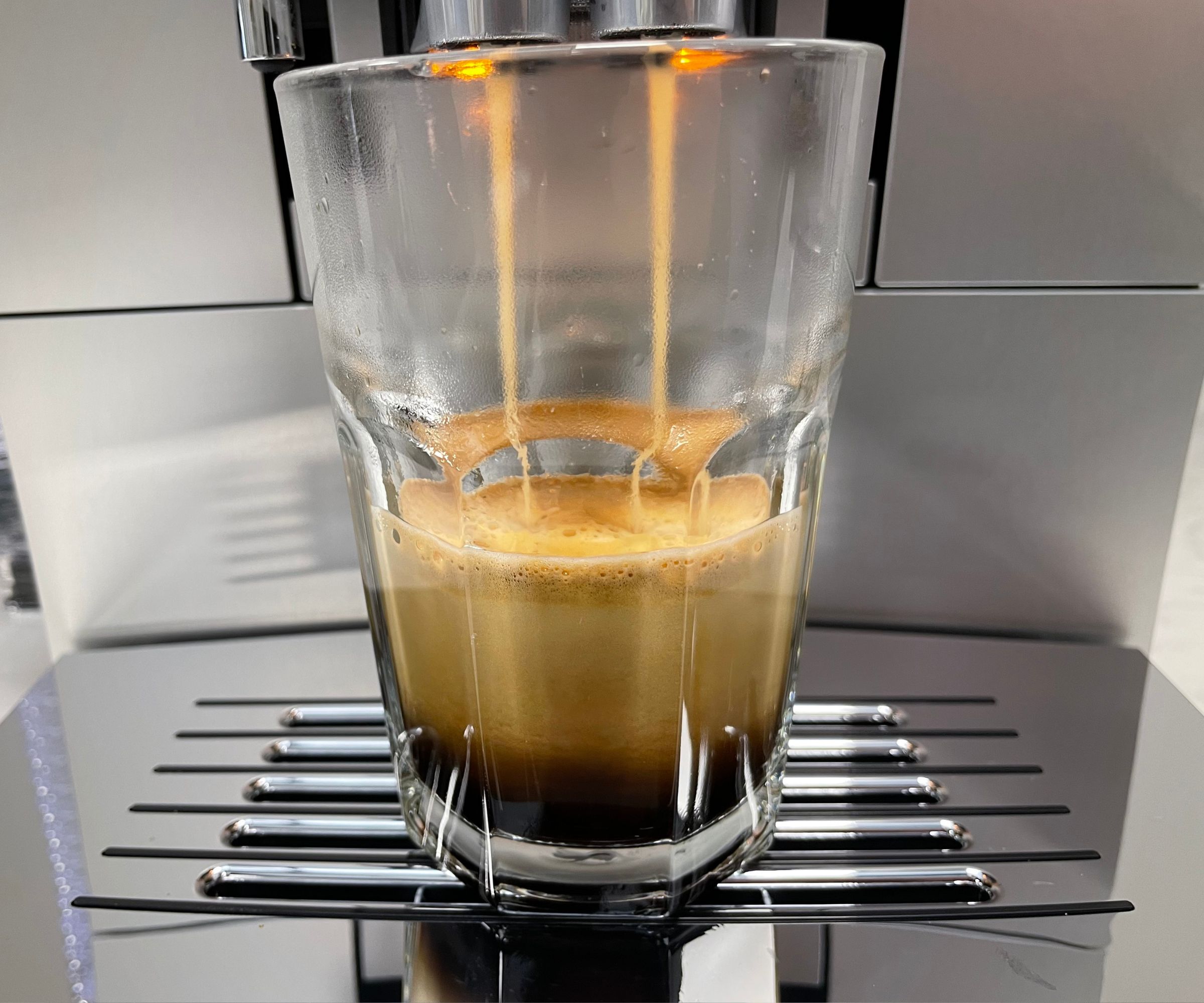
This is one of the most expensive bean-to-cup machines I've tested. Whilst it comes with plenty of premium features, I'd recommend taking a look at a couple of options from De'Longhi before you dive deep into a purchase.
De'Longhi's Eletta Explore is one of my long-term loves. It can make over 52 different types of coffee with the same, adjustable settings as the Jura. They're both excellent at brewing delicious, custom coffees; texturing plant-based and dairy milks; and at making iced coffee and cold brew. Performance-wise, it's hard to pick between the two.
I've always thought that the De'Longhi looks slick, but I think that Jura's reservoir and low lighting take things to the next step. Whether that small detail is worth another $1,600 is another question.
If you liked the sound of both of those, but you don't want to spend as much money, the Philips 3200 and De'Longhi Dinamica Plus coffee makers are still brilliant bean-to-cup options. They sit closer to $1,000, come with customizable settings, and texture milk as well as the Jura Z10 and De'Longhi Eletta Explore. You only sacrifice on the luxury of choice, since these offer 6-9 different coffee options, rather than the seemingly endless list of the more expensive options.
Should you buy it?
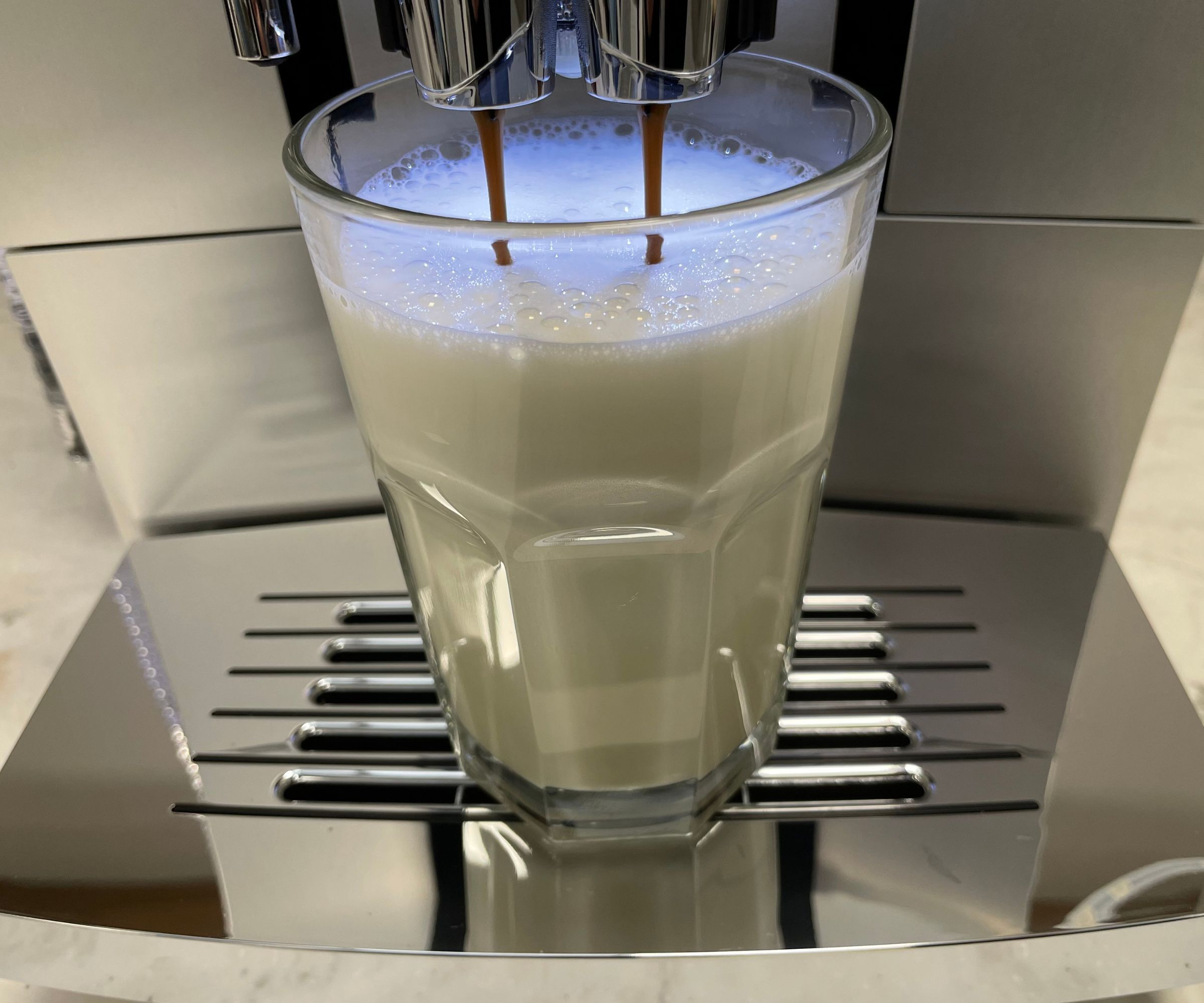
Nearly $4,000 for a bean-to-cup coffee maker is a big investment. The Jura makes delicious coffee, looks sleek, and is easy to use, so if you've got the money to spend, you'll love it. If you want to be savvy, there are cheaper options with similar offerings. However, with that being said, I wouldn't regret investing in the Z10.
How we test
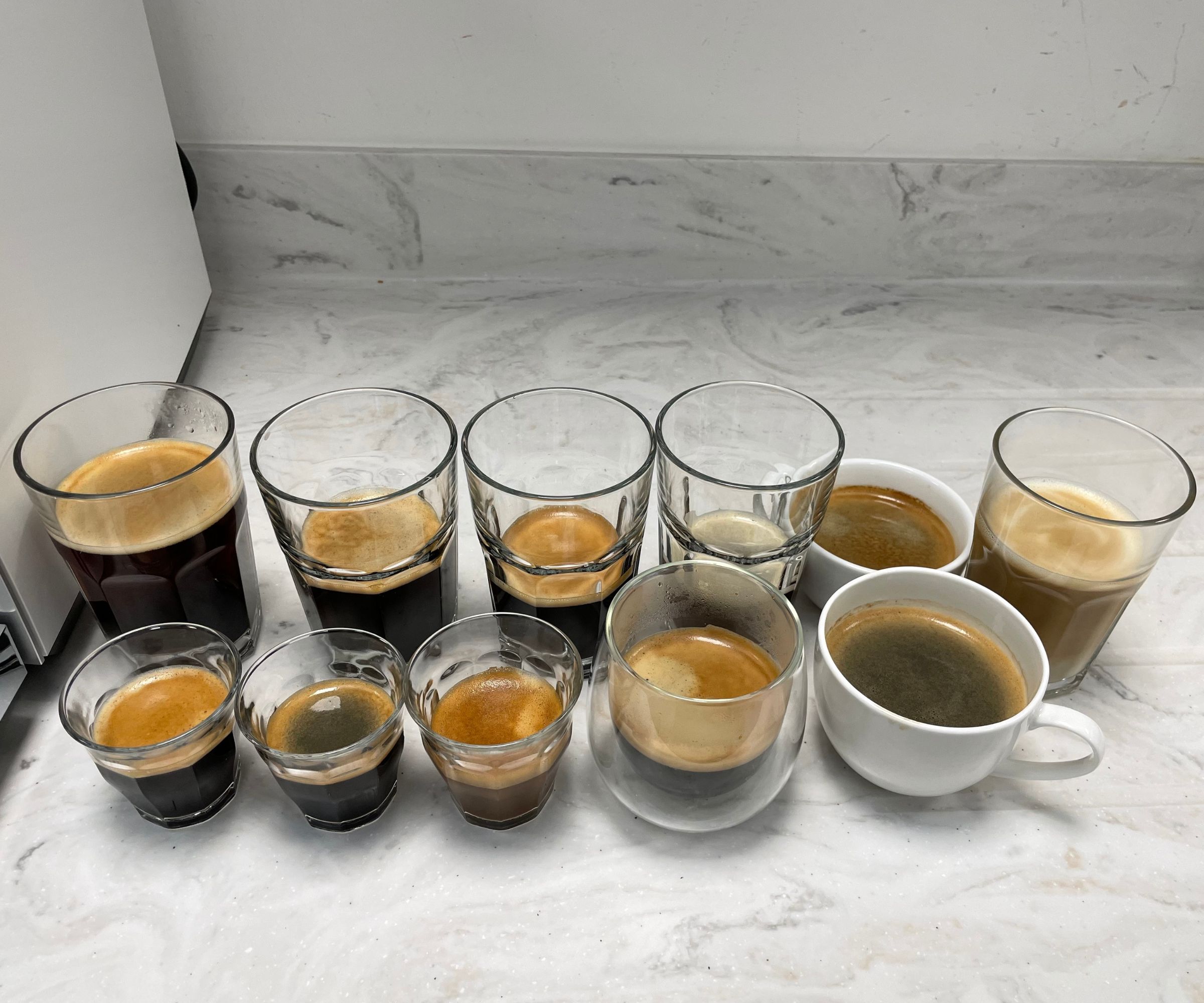
At Homes & Gardens, we take our coffee maker tests seriously. This means that we meticulously test every coffee maker that we think it's worth knowing about before deciding whether we want to recommend it to you.
Our team of experts is always researching the latest and greatest options on the market. Once we've found one that we think you'll like, we take it to our test kitchen and put it through a series of standardized tests.
These tests begin with espressos. These should be between 1-1.5 oz, brewed around 195 degrees, with a thick hazelnutty crema on top. We look for balanced, intense flavors, and a consistent brewing time (between 20 and 30 seconds) before we can move on to our next test.
For Americanos, we brew a 6 oz cup of coffee. Again, these should be around 190-200 degrees. If they're any hotter, your coffee will scald. Hopefully, you should still be able to see the traces of a crema on top too. The flavors should be bold, strong, and distinct. This will indicate that your coffee has been evenly extracted.
We look at cappuccinos and milk-based coffees to test how well a machine can texture both dairy and plant-based milks. I made a range of different milky coffees with the Jura, all of which were smooth, silky, and delicious. Well-steamed milk won't have visible bubbles, instead, they'll be made up of 'microfoam' which has a velvety texture in the mouth. Your milk shouldn't go above 160 degrees if it's dairy and other plant-based milks will have their own requirements.
We also make notes on what the machine is like to unbox, set up, clean, and maintain, so that you can get a good picture and idea of what it's like to use and live with one of these. That way, if you choose to invest in one, you won't have any nasty surprises waiting for you.
If you're interested in finding out more, you can visit our dedicated page for how we test coffee makers.







